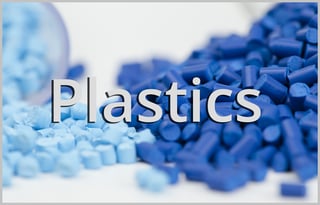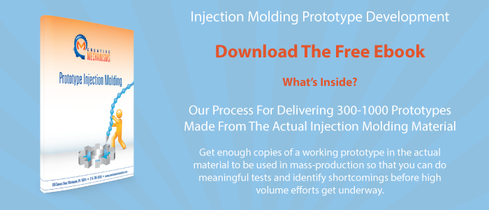Is Molding Plastic A Physical Or Chemical Change
Plastics are everywhere around us, but how much do y'all actually know nearly them? Permit's have an in-depth look at this incredibly important, abundant fabric. Nosotros'll talk over how they are created, identified, and categorized. Plastics are synthetic materials that originally derive from organic products such as hydrocarbon fuels (coal, natural gas, and crude oil), common salt, sand, and a number of other possible constituents. Production begins with the processes of distillation and slap-up in an oil refinery in which fractal groups of successively lighter hydrocarbon compounds are separated from the aggregate of raw cloth. Of particular interest to the plastic industry is a range of refined hydrocarbon distillates known collectively every bit Naphtha and used equally key contributors in the manufacturing process for plastic polymers (examples include ethylene C ii H 4 , propylene C three H 6 , and butene C 4 H 8 ). Almost plastics are created in one of 2 major processes: polymerization or polycondensation - sometimes known every bit chain growth and step growth polymerization respectively. In both cases, petroleum distillates are combined with specific catalysts to create novel, typically larger, molecules. Both processes occur in a reactor where heat is added causing small molecules to combine into larger ones (known as plastics). The resultant large molecules take unique backdrop depending on the specifics of the process. Want a more than in-depth explanation? Read below to understand the chemistry backside the creation of plastics. Plastic polymers have unique properties depending on their final structure, size, and the item monomer constituents they are made from during production. They are classified in several means: Thermoplastics or Thermosets Amorphous or Semi-Crystaline Homopolymers or Copolymers Categorization as either a thermoplastic or a thermoset has to do with the fashion the plastic, once created, responds to heat. Thermoplastics: Plastics that can be heated to their melting point, cooled, and re-heated again without significant degradation. Instead of burning, thermoplastics liquefy, assuasive them to be hands injection molded and and so subsequently recycled. Examples include two plastics very mutual to injection molding ( ABS and Polyoxymethylene , i.e. POM or Acetal). Thermoplastics are much more common than thermosets. Their structure involves a serial of repeat units combined together into a single molecule organized in a linear sequence. Thermosets: Plastics that can be heated but one time (typically during the injection molding process). The first heating causes thermoset materials to set (similar to a 2-part epoxy) resulting in a chemical change that cannot be reversed. If you lot tried to oestrus a thermoset plastic to a loftier temperature a 2nd time information technology would simply burn. This characteristic makes thermoset materials poor candidates for recycling. Examples include Polyurethane (PUR). The molecular construction of thermoset plastics is a ii- or iii-dimensional network equally opposed to i-dimensional linear chain (as in the case of thermoplastics). Categorization as an amorphous material or a semi-crystalline material has to do with the molecular structure of the fabric. Baggy ("shapeless") materials lack the long-range symmetry or ordered structure of crystalline materials. As a issue, Amorphous materials gradually soften every bit oestrus is applied. Semi-crystalline materials, by contrast, accept a more ordered construction and exhibit highly abrupt cook points (meaning they transition from solid to liquid over a very small temperature range). Semi-crystalline materials will stay in their solid country until a certain amount of heat is captivated at which point they volition rapidly transition into a liquid. Categorization every bit a homopolymer or a copolymer has to do with the monomer make-up of the last textile. A monomer is smaller molecule that binds to other small molecules (other monomers) to make a larger molecule (polymer). Call back of monomers as the simplest repeating unit of measurement (pocket-sized molecule) in the makeup of a larger molecule. If the terminal plastic is fabricated from a single type of monomer then it is classified equally a homopolymer. If the plastic is fabricated from a combination of two or more different types of monomers then information technology is classified as a copolymer. There are plusses and minuses to both homopolymers (of which Delrin is the principal example) and copolymers (of which there are a large number of examples, read here ). Here are a few characteristics to recall about: Homopolymers are stiffer. Homopolymers have college room temperature bear on forcefulness. Homopolymers have higher tensile strength. Homopolymers accept a slightly higher operation temperature. Homopolymers are slightly harder and more slippery. Copolymers have meliorate dimensional stability. Copolymers are more resistant to chemicals. Copolymers are less porous when extruded. Plastics are used virtually every solar day by much of Earth's population. They have a diverse range of applications across a vast number of industries. In the prototype blueprint, manufacturing, and injection molding industry we collaborate with plastics on a daily basis. Some plastics are useful for applied science purposes (the technology plastics), while others are readily available in manufacturing, or are easily machined or 3D printed. Availability and feasibility of use throughout the design and development procedure, in add-on to suitability for use in the last production, can accept a significant touch on on the plastic you choose for your products. Take some questions or need a plastics recommendation? Contact us today! Bonus: What's The Chemistry Backside The Creation of Plastics (For Those People Who Want A More In-Depth Explanation): Chain-growth polymerization involves the combination of one monomer with some other, followed by the sequential improver of further monomers to the base of operations group. The result is a long polymer chain with unique characteristics (size, construction, and chemical properties). The molecular bonds are fabricated through radical reactions (that is, they involve molecules or atoms with unpaired valence electrons). Concatenation growth polymerization typically involves double or triple carbon bonds as the molecular backbone of the larger construction and does non involve the loss of molecules during its synthesis. Footstep-growth polymerization involves a series of successive reaction stages in which smaller molecules (typically monomers that include heteroatoms like Oxygen and Nitrogen) combine by joining with an side by side monomers to create a dimer ("2 parts") and a by-product (condensate). Dimers can become trimers ("3 parts"), tetramers ("iv parts"), so forth. Stride growth polymerization typically involves the loss of pocket-sized molecules during synthesis (generally water is released as a condensate), or the final molecule contains heteroatoms (atoms other than Carbon and Hydrogen) equally role of their backbone structure. As a event of the condensate released during synthesis, plastics resulting from step growth polymerization are oftentimes called condensation polymers.
What is a Plastic?
How are Plastics Created?
How are Plastics Identified?

Topics: Plastics
Source: https://www.creativemechanisms.com/blog/how-plastics-are-made-and-what-you-need-to-know-about-them
Posted by: pickettofeautioull.blogspot.com


0 Response to "Is Molding Plastic A Physical Or Chemical Change"
Post a Comment